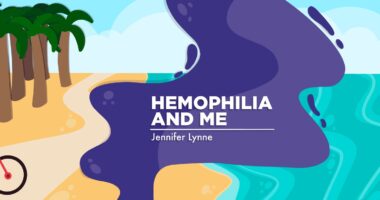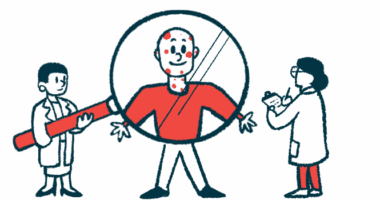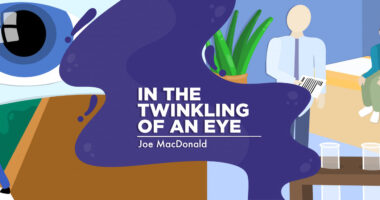When bleeding disorders and Ehlers-Danlos syndrome overlap
Recognizing the link is key to improving care

During the National Conference for Women with Hemophilia and Rare Factor Deficiencies, held Oct. 3-5 in Detroit, I joined a standing-room-only session titled “More Than One Story: Exploring Joint Health in Hemophilia, Hypermobility, and Beyond.” It was refreshing to see hypermobility on the agenda — a topic that resonates deeply with so many of us living with bleeding disorders.
The presenter asked, “How many of you are in pain?”
Every single hand went up.
The moment was both powerful and heartbreaking. It wasn’t a statistic or a slide, but a room full of lived experience. Pain, it seemed, had become an uninvited companion for nearly every woman there, right alongside hemophilia and hypermobility.
A hidden connection
For years, many in the bleeding disorders community have suspected there’s more to our stories than clotting factor levels alone can explain. Easy bruising, joint instability, fatigue, and chronic pain don’t always fit neatly within the framework of a factor deficiency. Increasingly, many of us are discovering that another diagnosis — Ehlers-Danlos syndrome (EDS) — may be part of the picture.
When I was young, my hematologist walked into the exam room and asked if I could touch my thumb to my forearm — something I did easily. He told me he’d been asking all his patients to try it, and many could. At the time, none of us realized the significance.
EDS is a group of genetic connective tissue disorders affecting collagen — the “glue” that holds the body together. When collagen doesn’t function properly, it can lead to stretchy skin, hypermobile joints, fragile blood vessels, and delayed healing. Sound familiar? Many of these symptoms overlap with what people with bleeding disorders already experience.
I was diagnosed with EDS by my hematologist when I was young. I had dislocated my knee and shoulder, and my joints were excessively flexible. Like many women, I have both mild bleeding disorders and EDS. This overlap may explain why some of us bruise more easily, bleed longer, or live with joint pain even when our clotting labs appear “low normal.”
For decades, these symptoms were brushed off as benign hypermobility or just how some people are built. But as science advances, we’re learning that connective tissue disorders are neither benign nor rare.
EDS is also associated with mast cell activation syndrome and a form of dysautonomia called postural orthostatic tachycardia syndrome (POTS), both of which I’ve been navigating lately. Many women I meet in the bleeding disorders community share the same struggles.
Living with both hemophilia and EDS can cause bleeding episodes that go beyond what’s typically expected. For example, when my knee pops out of joint, it sometimes bleeds internally and swells.
For me, and for many women I’ve spoken to, the pain isn’t just from joint bleeds. It’s from joints that partially dislocate, soft tissues that never fully heal, and muscles that constantly overcompensate for loose ligaments. Add fatigue, mast cell issues, or POTS, and you have a recipe for a life lived in the gray space between visible and invisible illness.
Recognizing the link between EDS and bleeding disorders isn’t just about adding another diagnosis — it’s about improving care. If a provider only looks at lab results, they might miss the bigger picture. A person with mild hemophilia and EDS may need more factor; they may need physical therapy focused on joint stabilization, or a doctor who understands connective tissue pain.
This intersection also has a profound impact on mental health. Chronic pain wears on you physically, emotionally, and spiritually. When pain becomes “normal,” it can lead to anxiety, depression, and isolation. Acknowledging EDS as part of the equation validates these experiences and encourages a more compassionate, holistic approach to care.
Raising our hands — and our voices
That moment in Michigan when every hand went up has stayed with me. It reminded me that pain, though invisible, connects so many of us across diagnoses. It also reminded me of the power of community: women sharing their stories, comparing symptoms, and realizing they’re not alone.
Awareness is growing, but more education is needed for hematologists, geneticists, physical therapists, and especially for women themselves. When a woman says she’s in pain, her words should be believed, not minimized.
I left that conference hopeful. Hopeful that the next generation of women with bleeding disorders will be met with curiosity instead of confusion. Hopeful that multidisciplinary care — hematology, genetics, gynecology, and pain management — will become the standard.
Until then, I’ll keep raising my hand — not just to say “I’m in pain,” but to say, “We deserve better understanding, better care, and less pain.”
And I know I won’t be raising it alone.
Note: Hemophilia News Today is strictly a news and information website about the disease. It does not provide medical advice, diagnosis, or treatment. This content is not intended to be a substitute for professional medical advice, diagnosis, or treatment. Always seek the advice of your physician or another qualified health provider with any questions you may have regarding a medical condition. Never disregard professional medical advice or delay in seeking it because of something you have read on this website. The opinions expressed in this column are not those of Hemophilia News Today or its parent company, Bionews, and are intended to spark discussion about issues pertaining to hemophilia.








Mari H
Thank you for raising awareness for both EDS and bleeding disorders. A small correction: not all types of EDS are caused by problems with collagen synthesis. Other connective tissue proteins such as tenascin X may be the culprit and the cause of the most common type of EDS, the hypermobile form which is diagnosed clinically, is not known. In addition, pre-2017 diagnoses like the author's are no longer considered valid, as the hypermobile EDS diagnostic criteria were too lax (pun intended) and the international EDS consortium recommends that everyone with such a diagnosis gets reevaluated using the current criteria. This is especially important to rule out rarer connective tissue disorders. Those that affect the vascular connective tissue matrix, such as vEDS, prevent platelets from sticking to injuries in the blood vessel walls properly, delaying the start of the clotting cascade. In addition, up to 50% of people with vEDS have been found to have platelet aggregation issues which prolong bleeding time.
Jennifer Lynne
Thank you so much for your thoughtful and informative comment — and for clarifying some of the distinctions within the Ehlers-Danlos spectrum. I appreciate your note about the updated diagnostic criteria; it’s such an evolving area of medicine, and many of us who were diagnosed years ago are still learning how our conditions fit within the current classifications. I was recently re-evaluated using the newer criteria, and my diagnosis was confirmed.
I’m grateful you took the time to expand on this — it helps everyone reading better understand the complexity of both EDS and bleeding disorders.
Warmly,
Jennifer
Pratap Nagur
Usefull